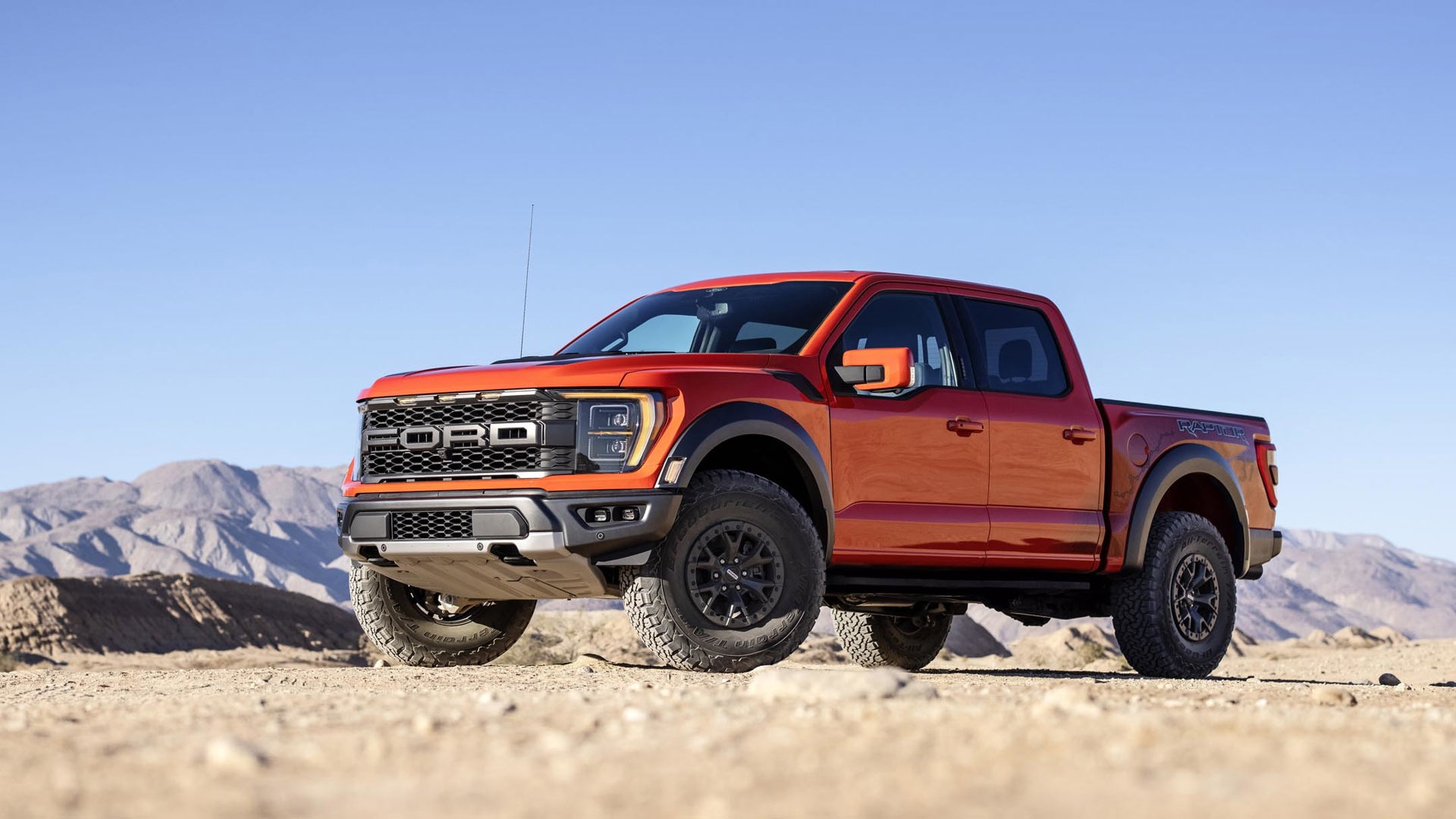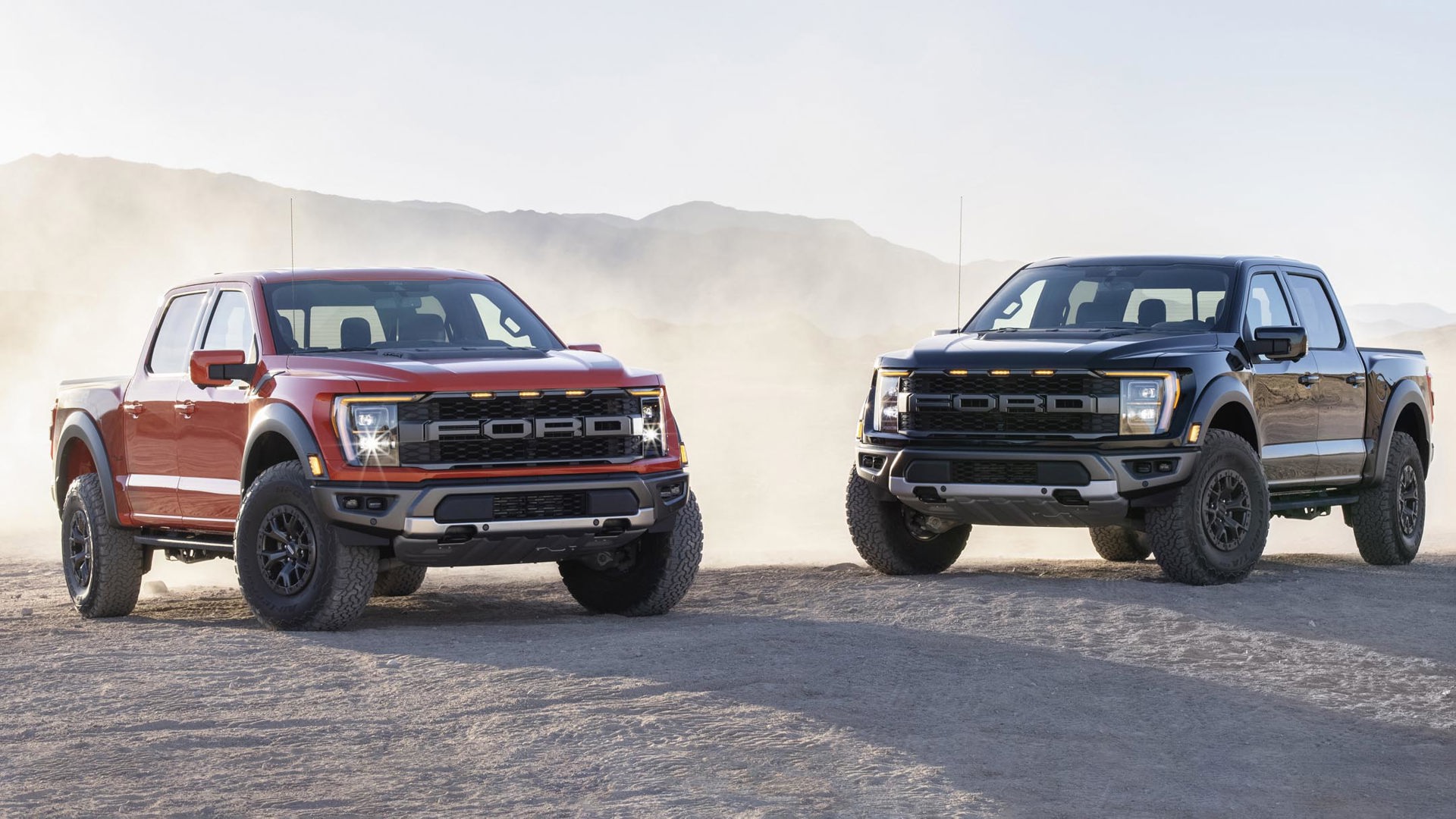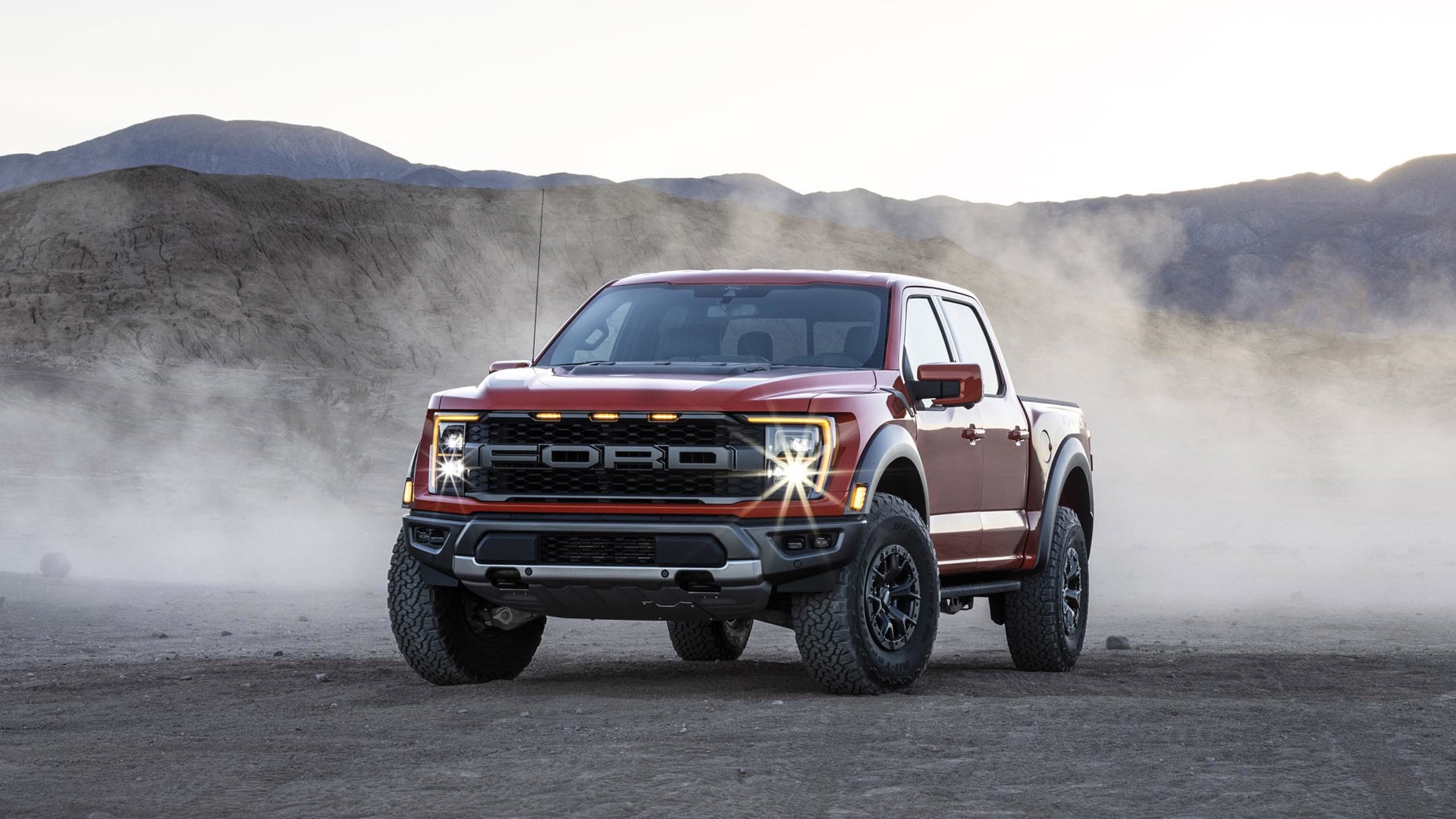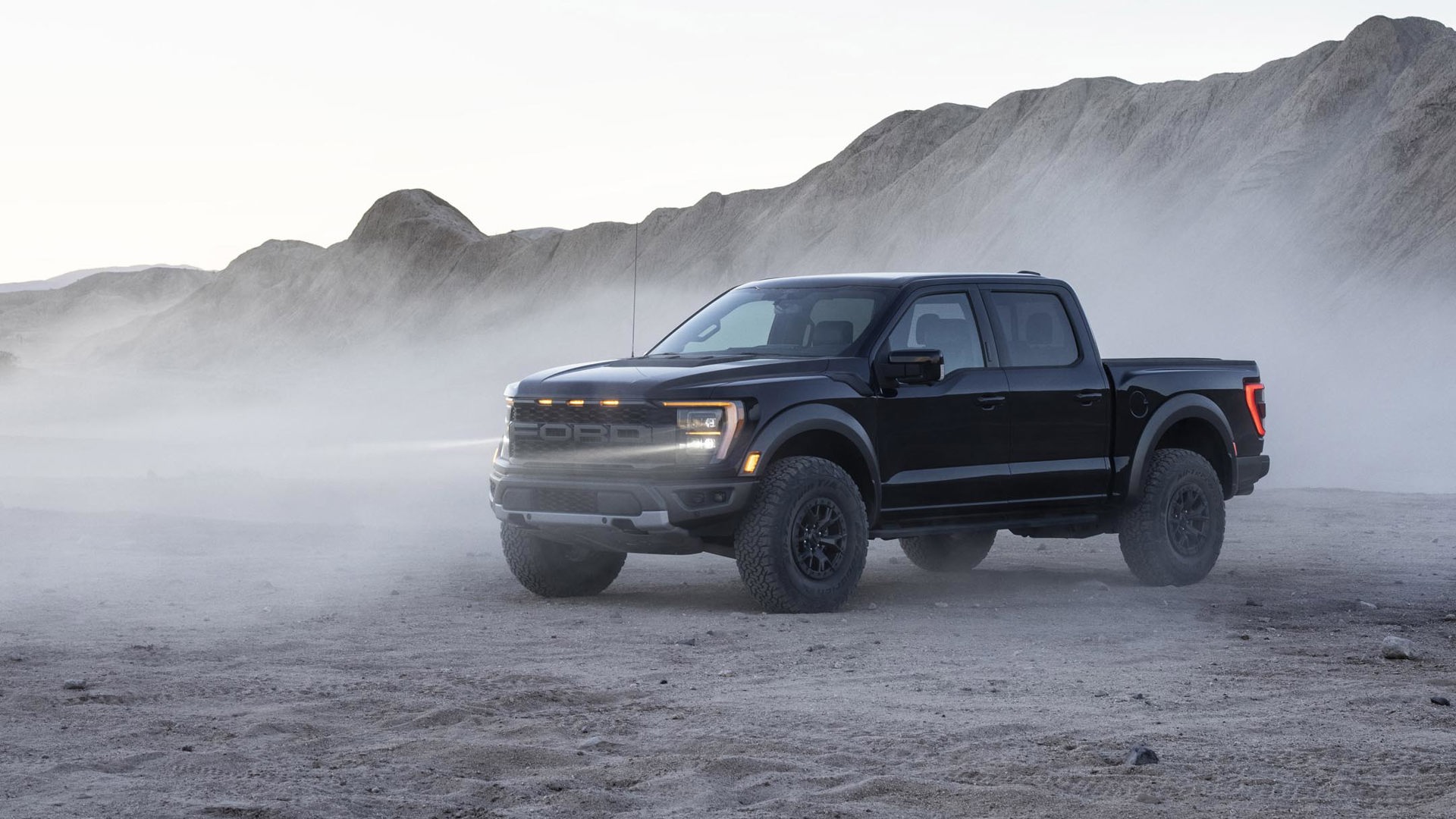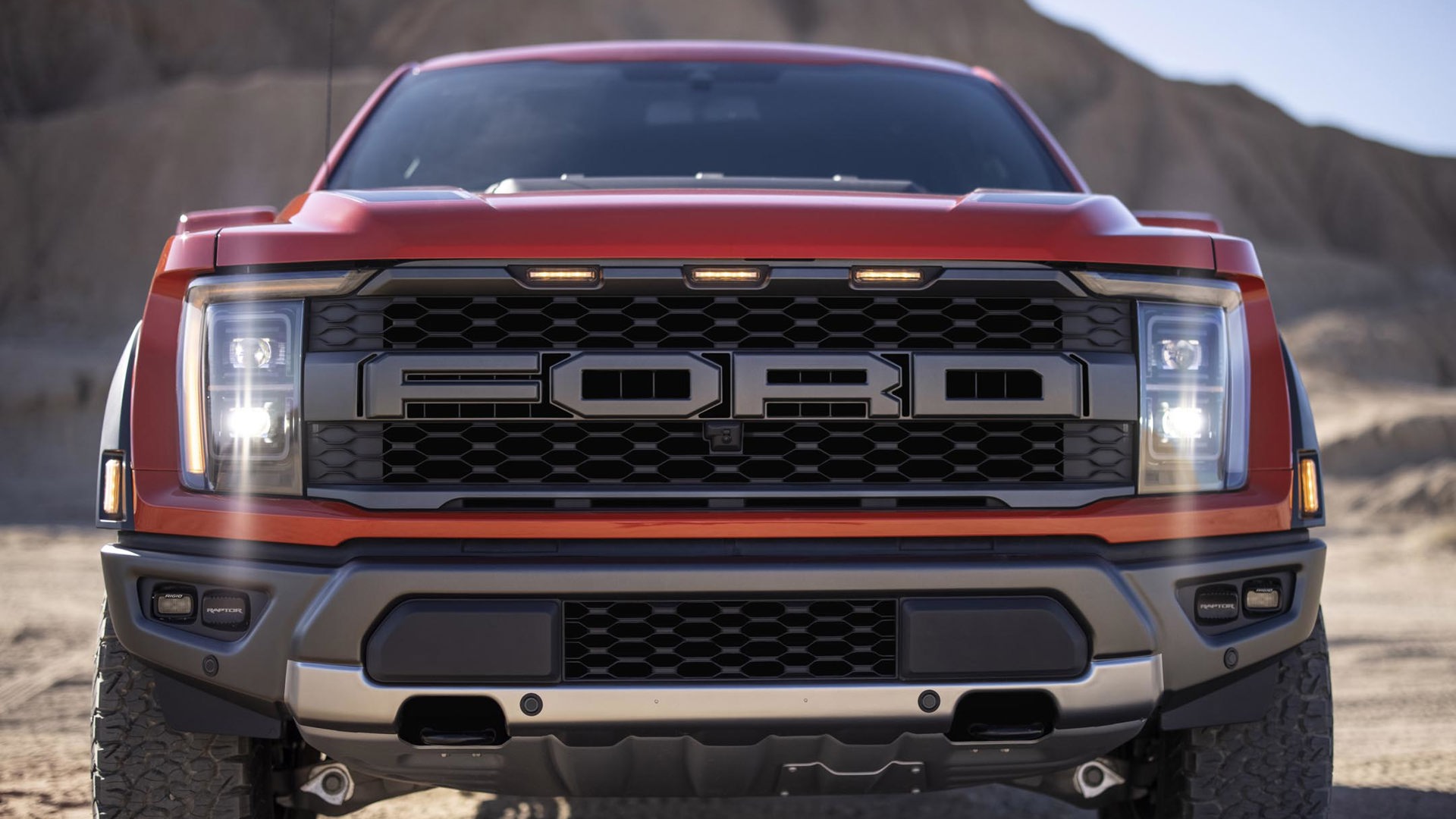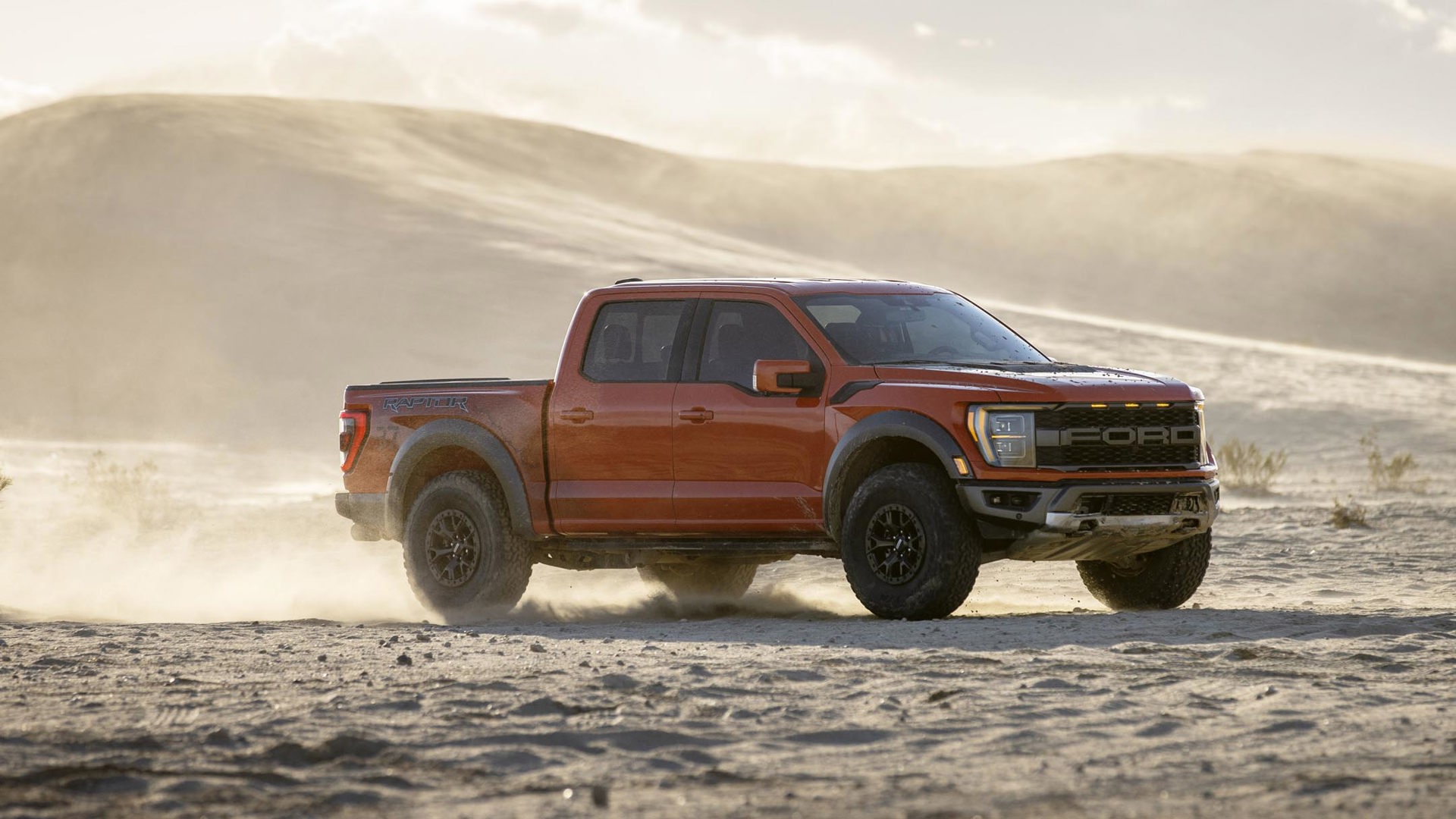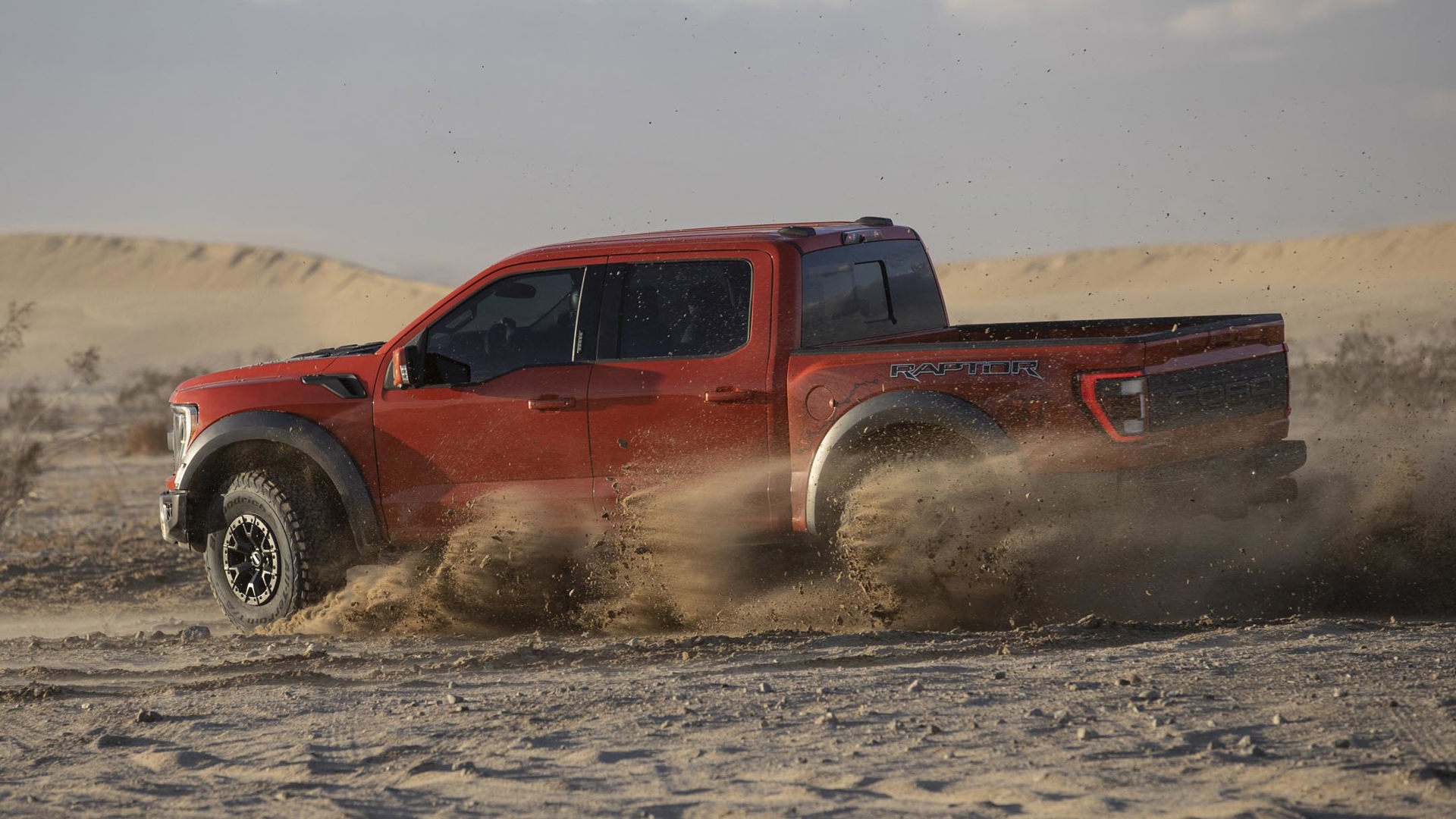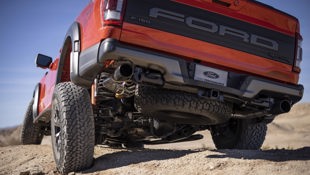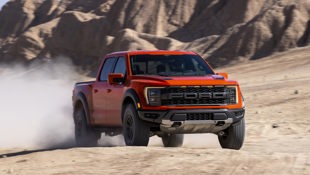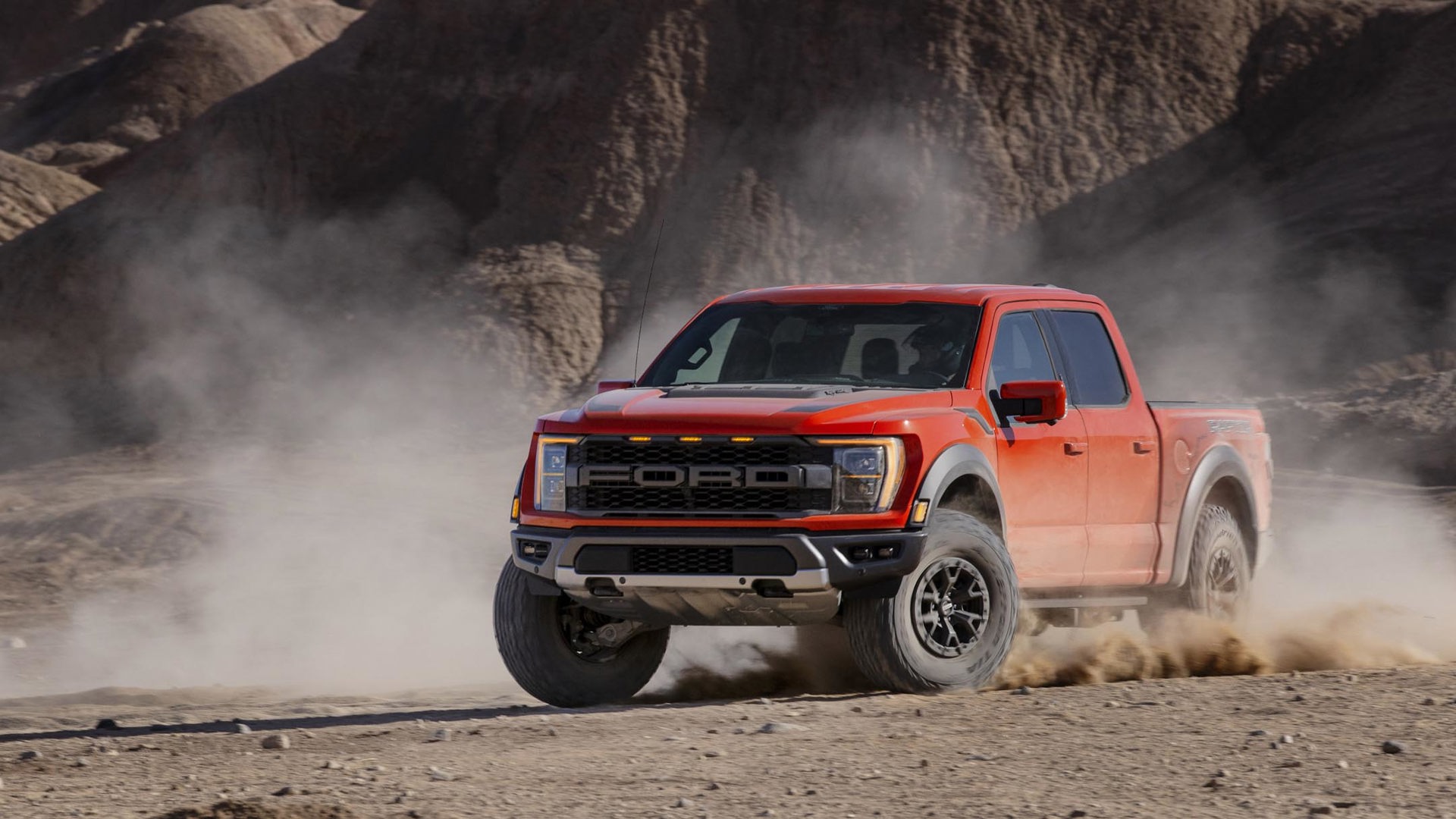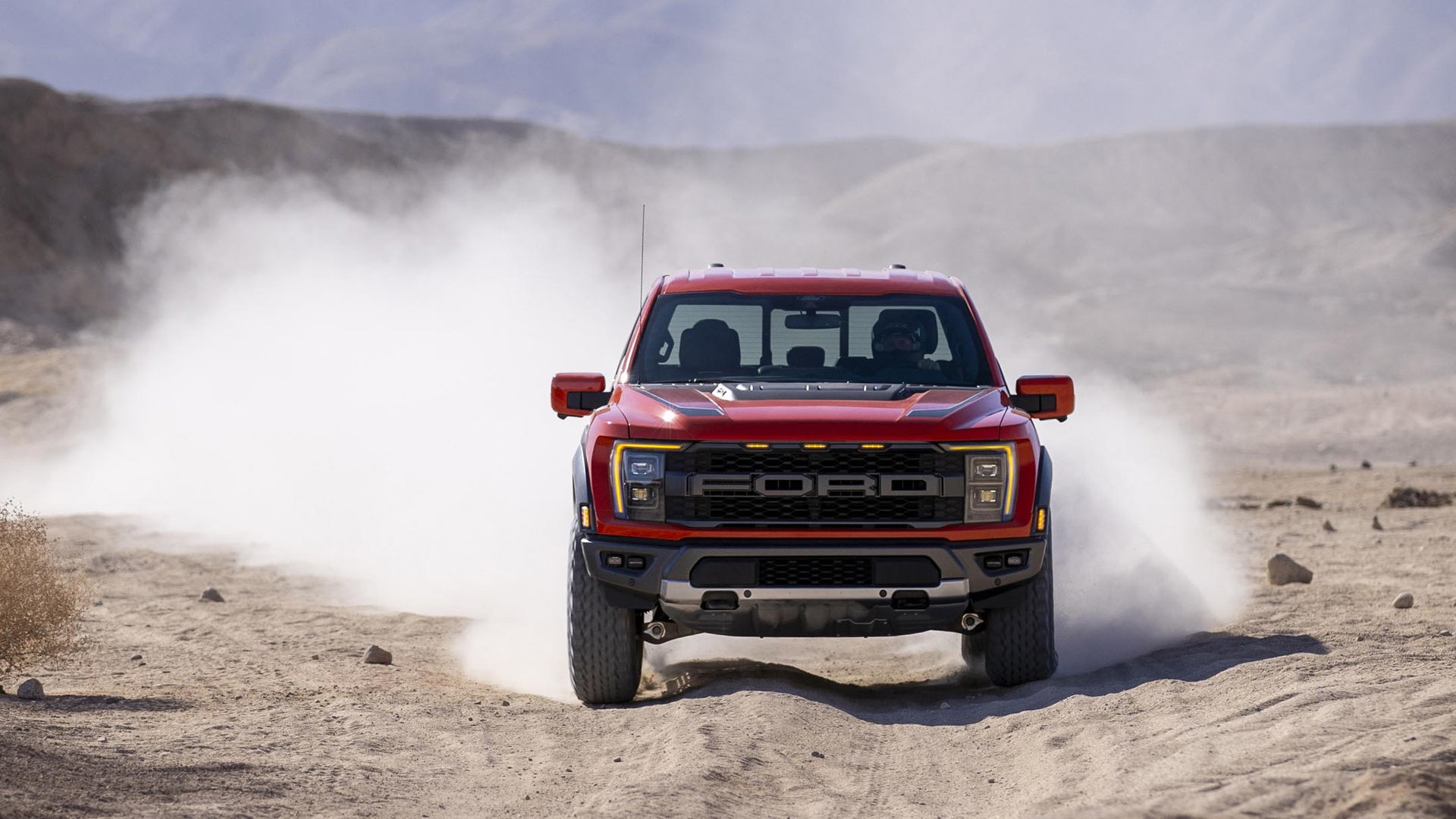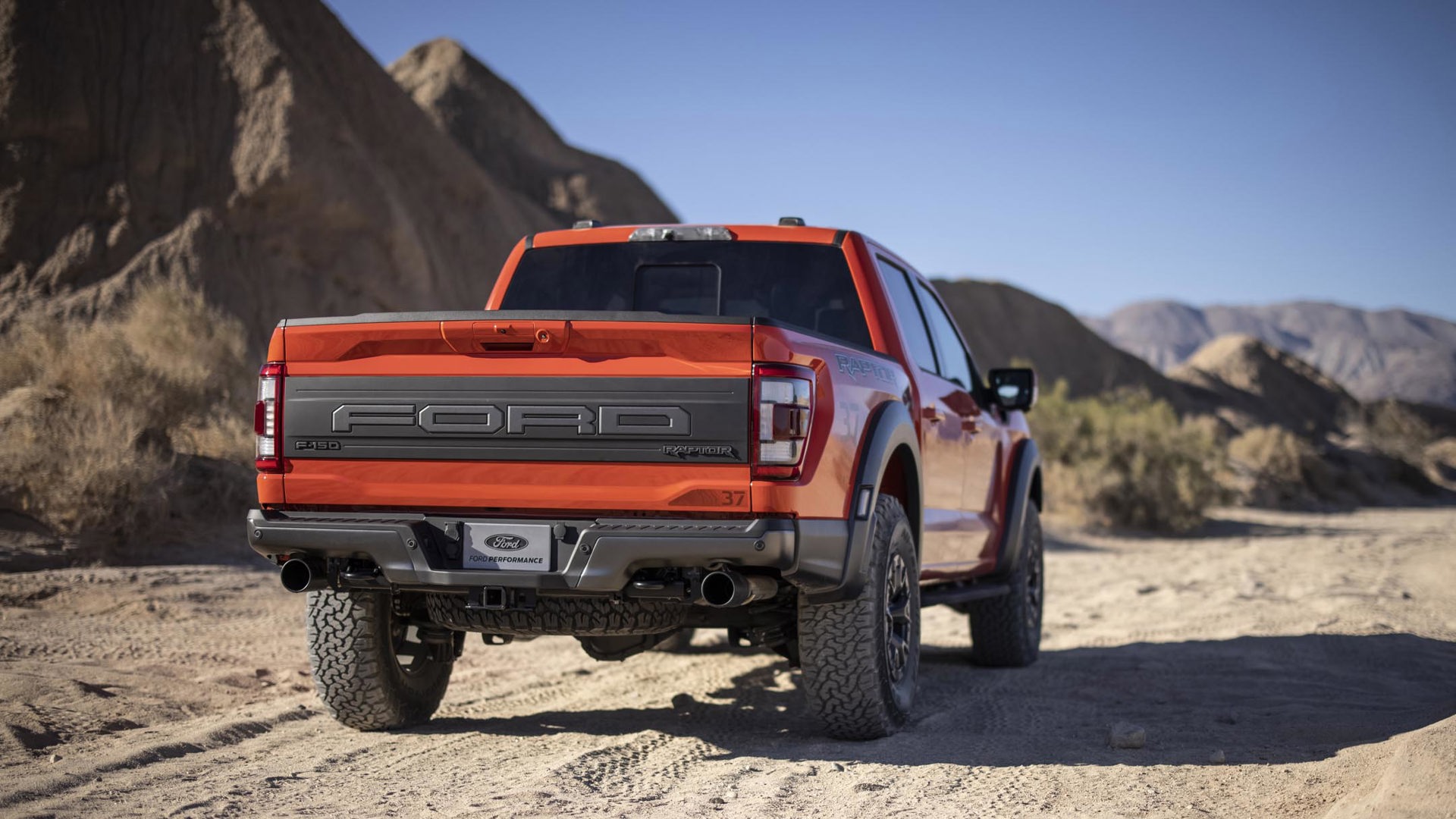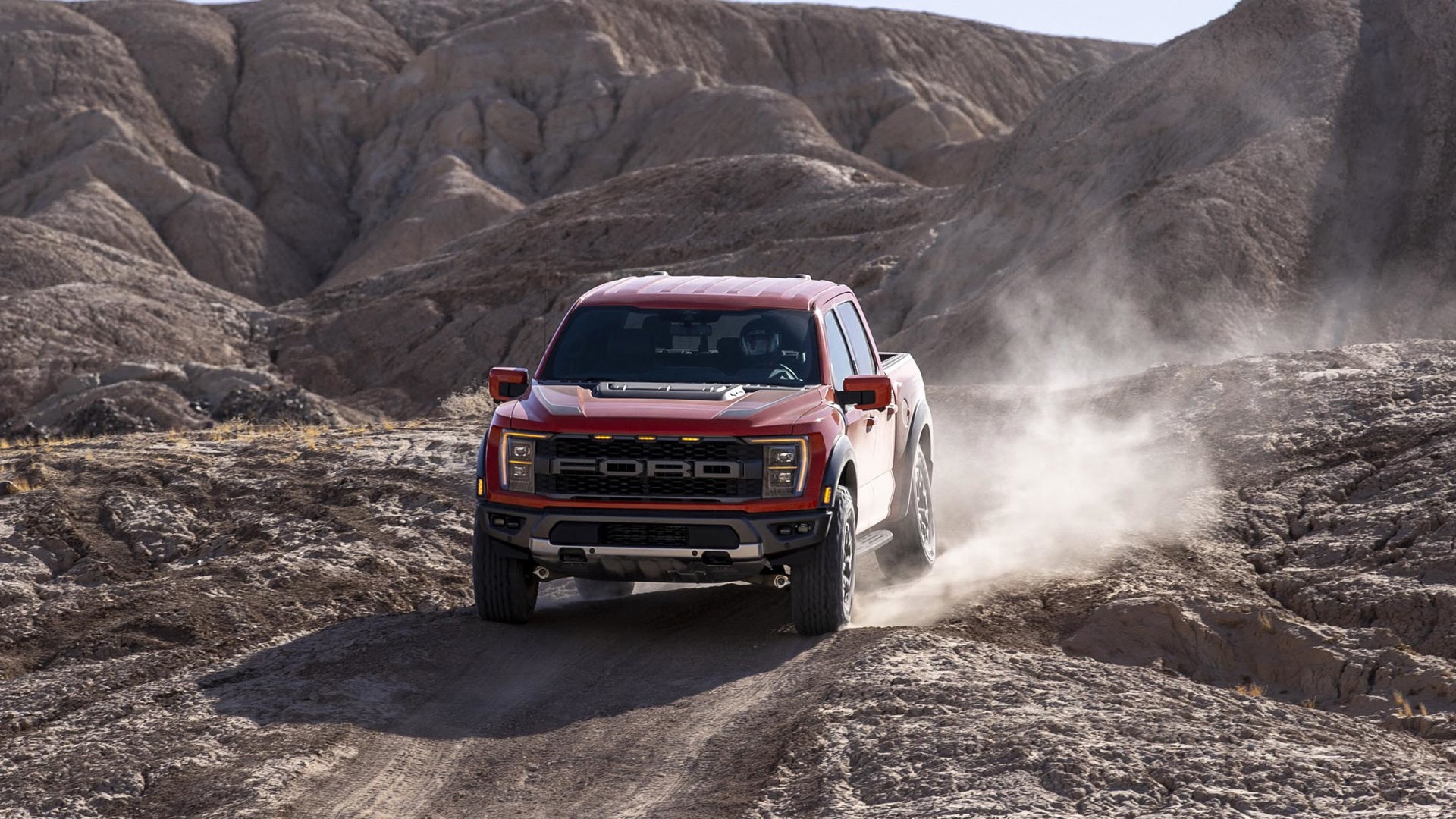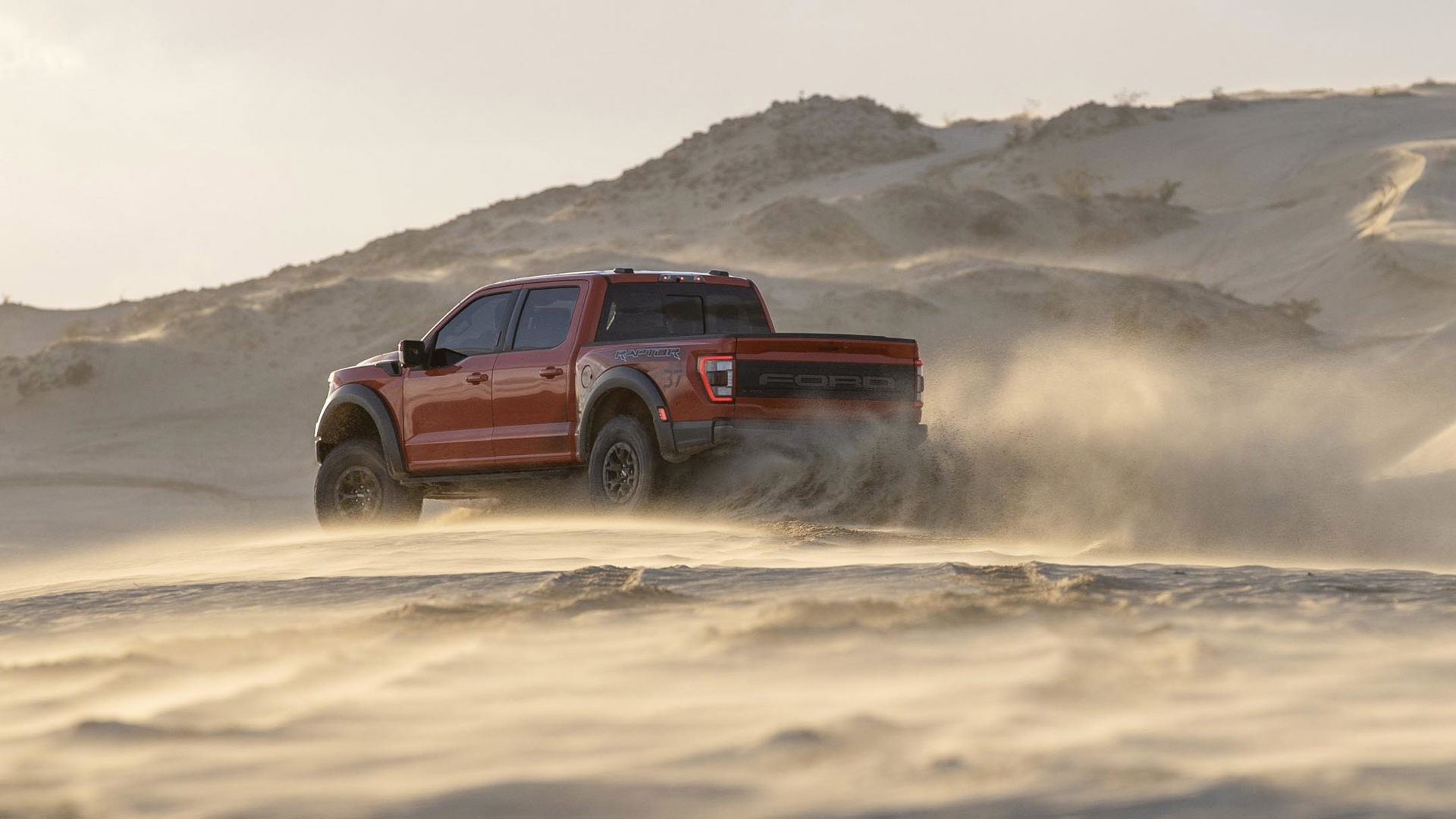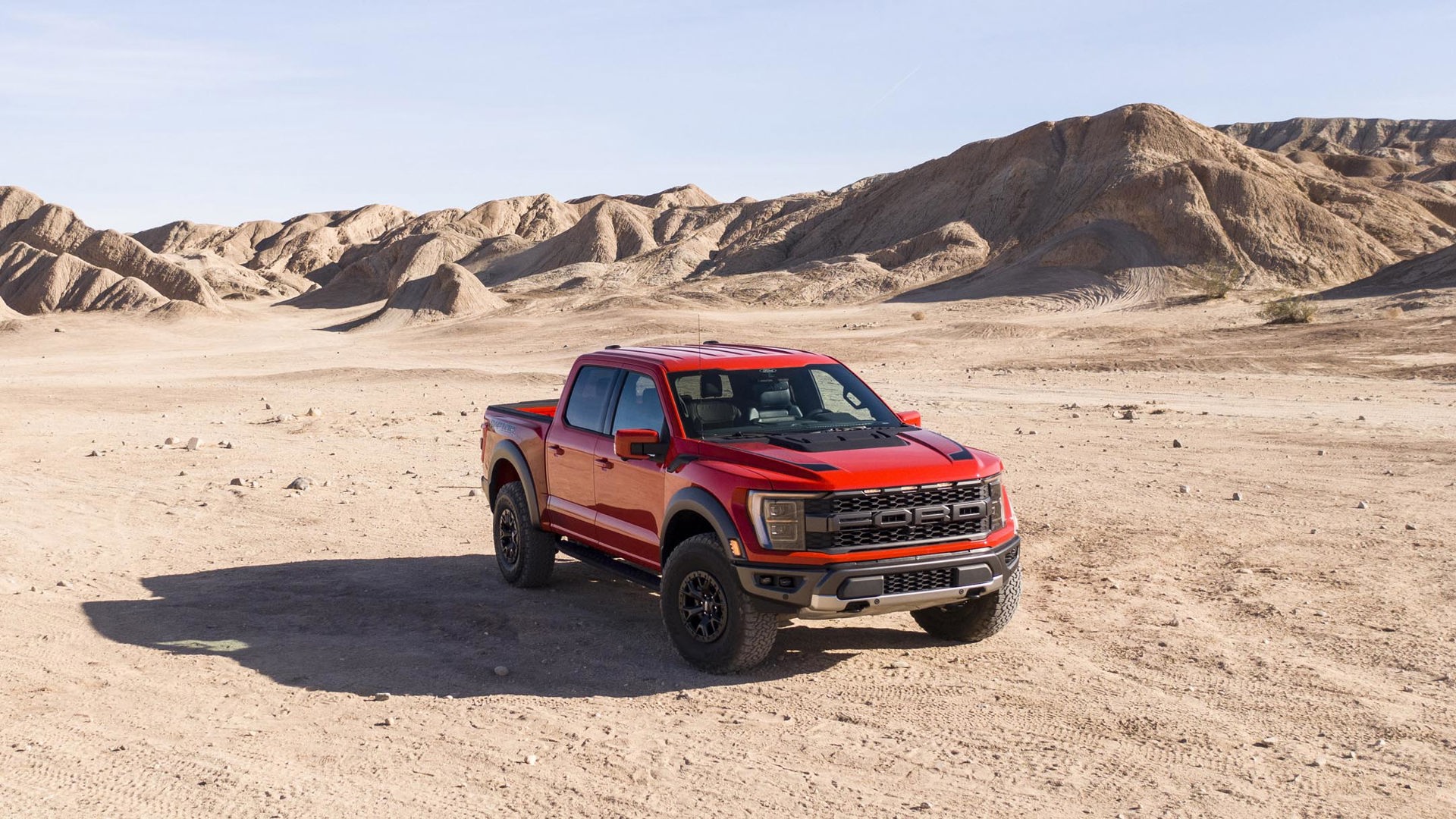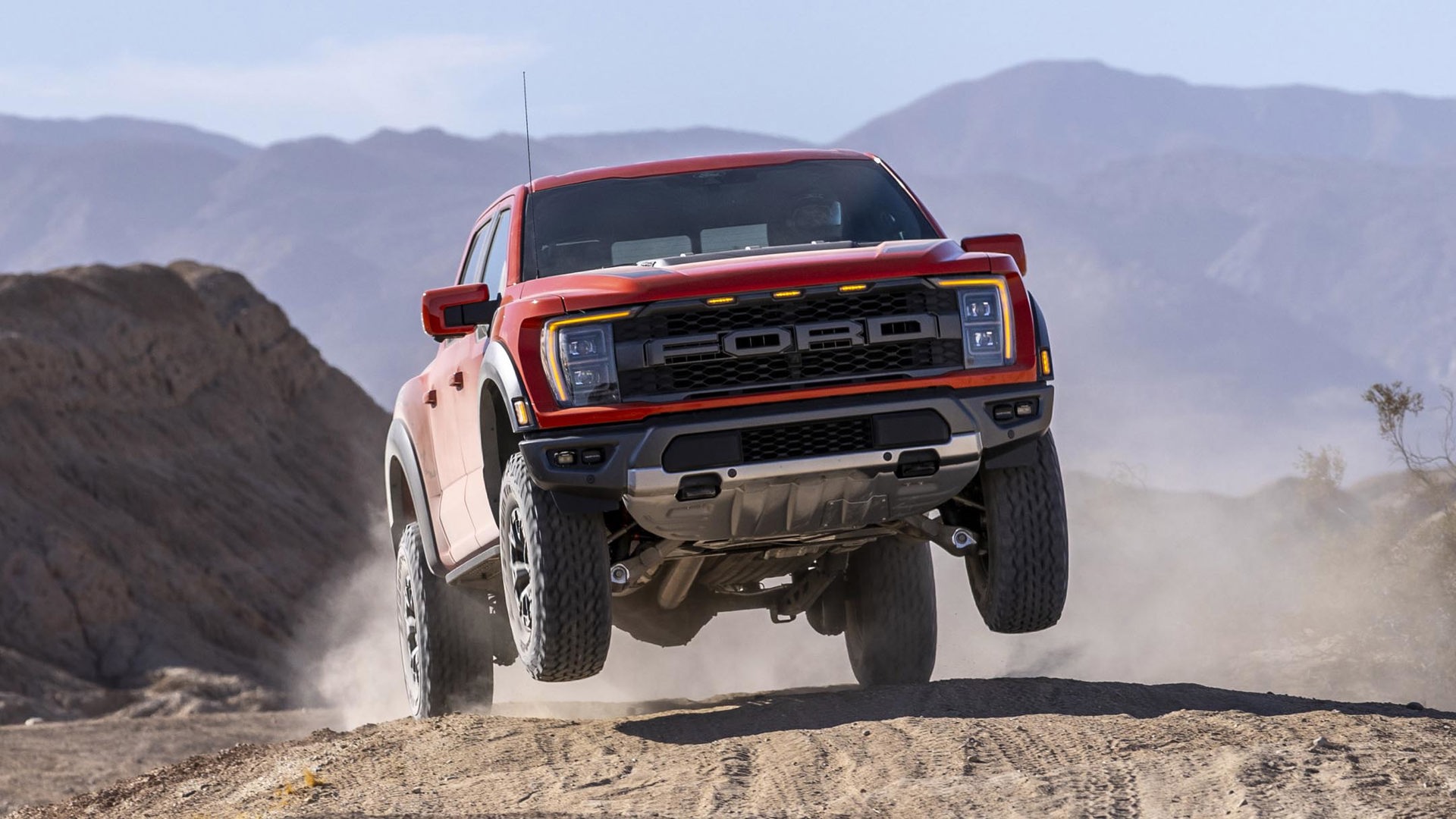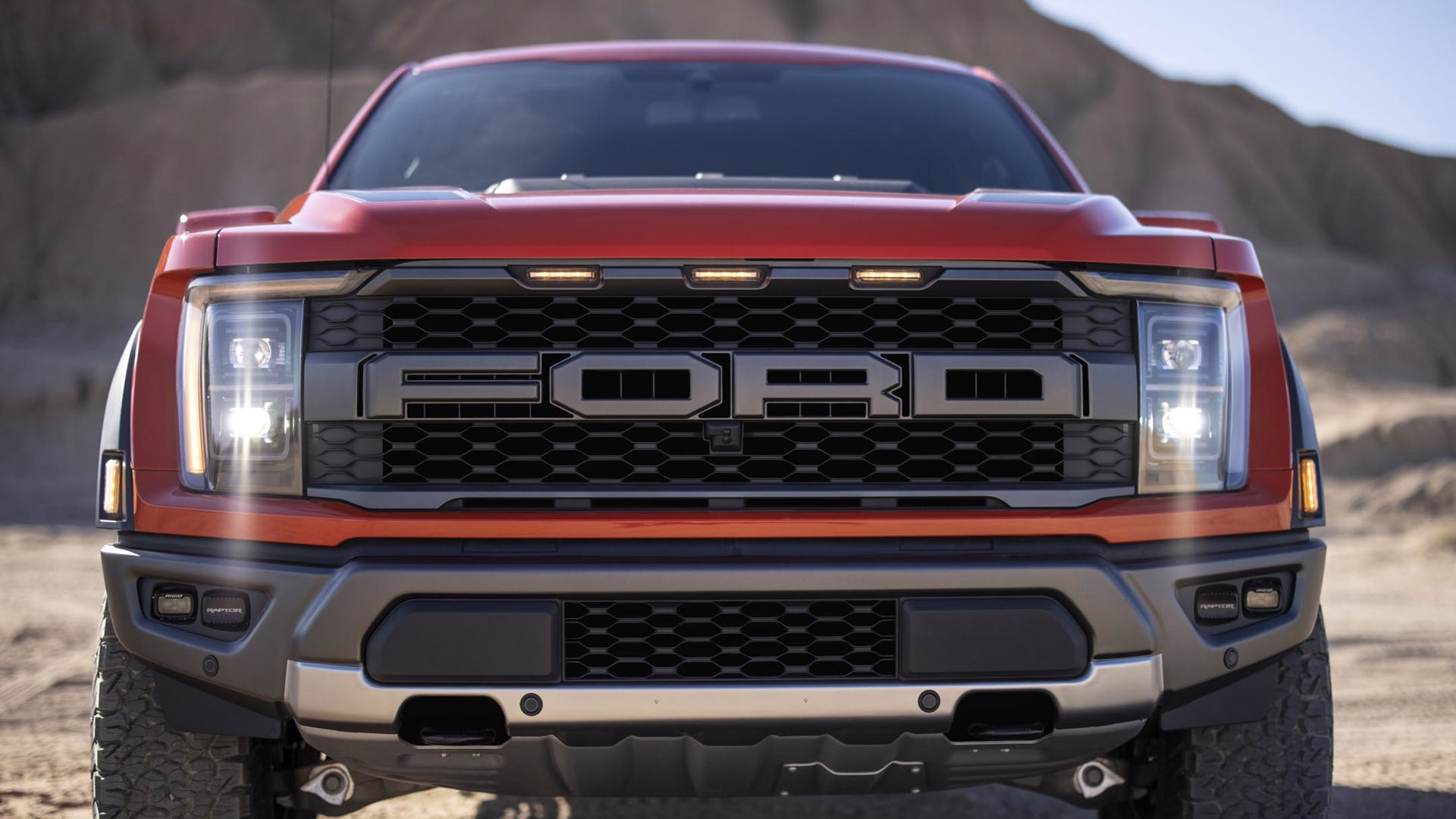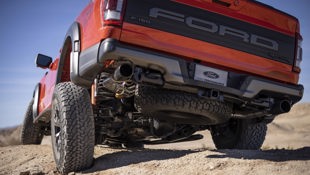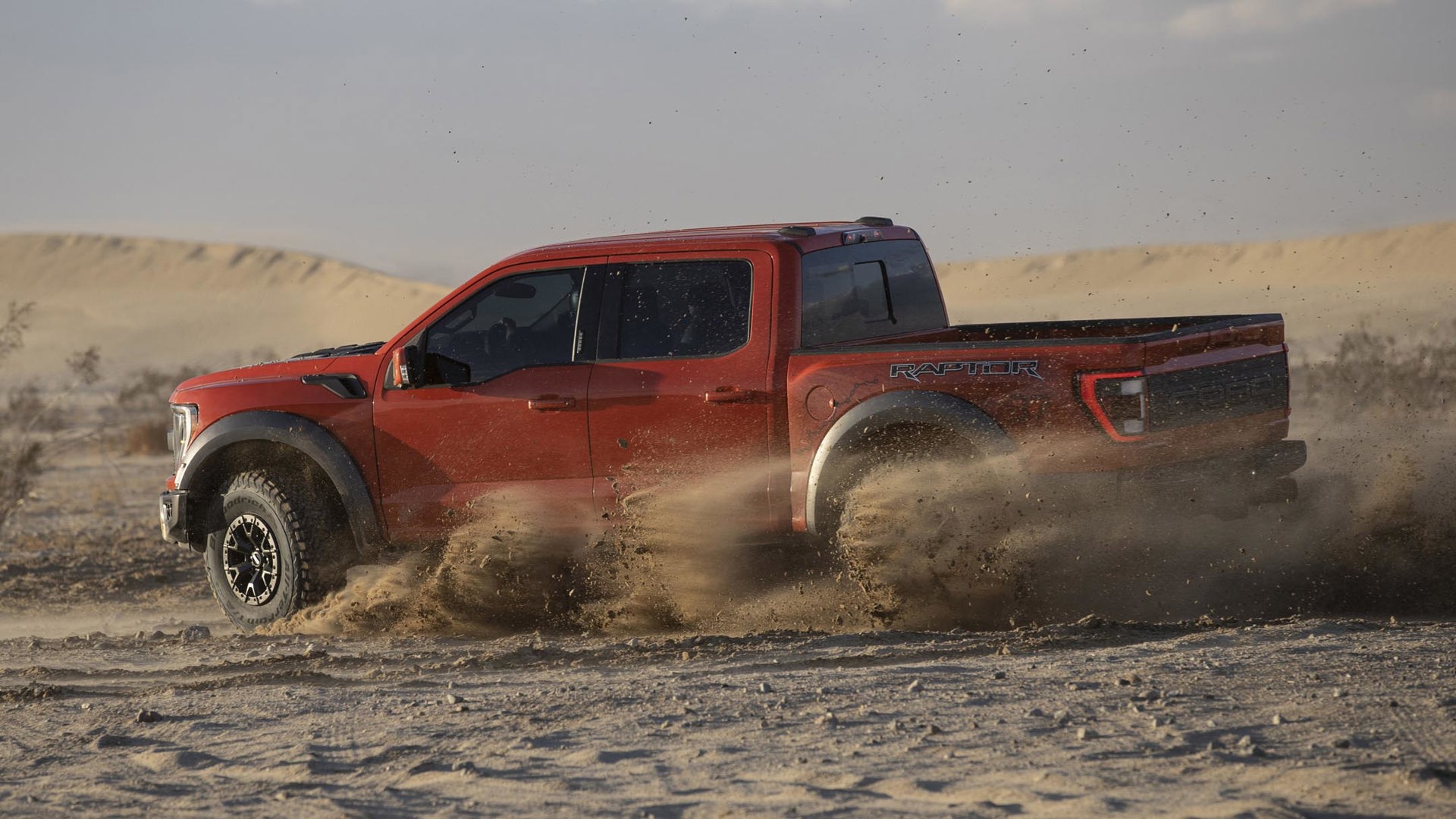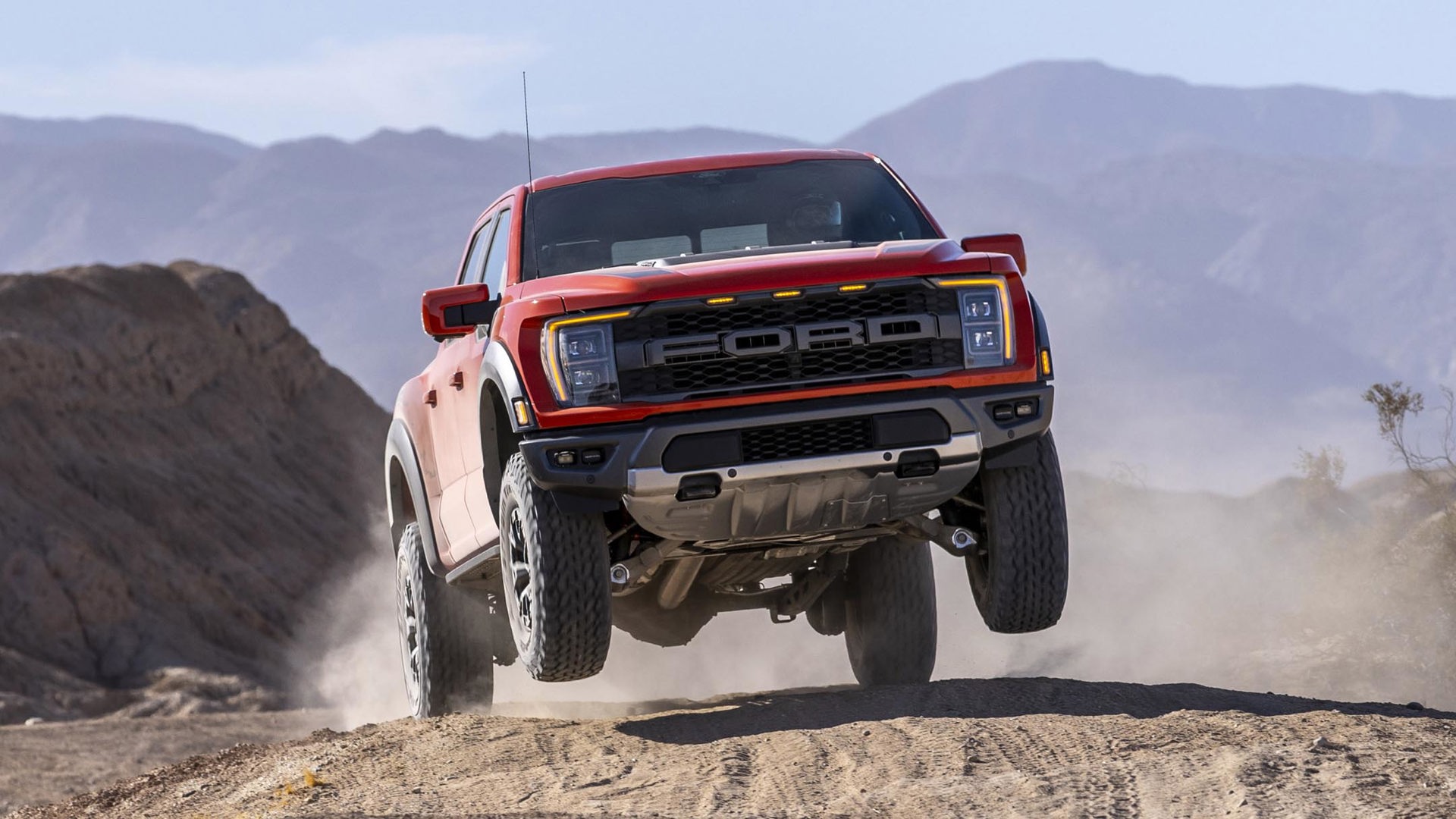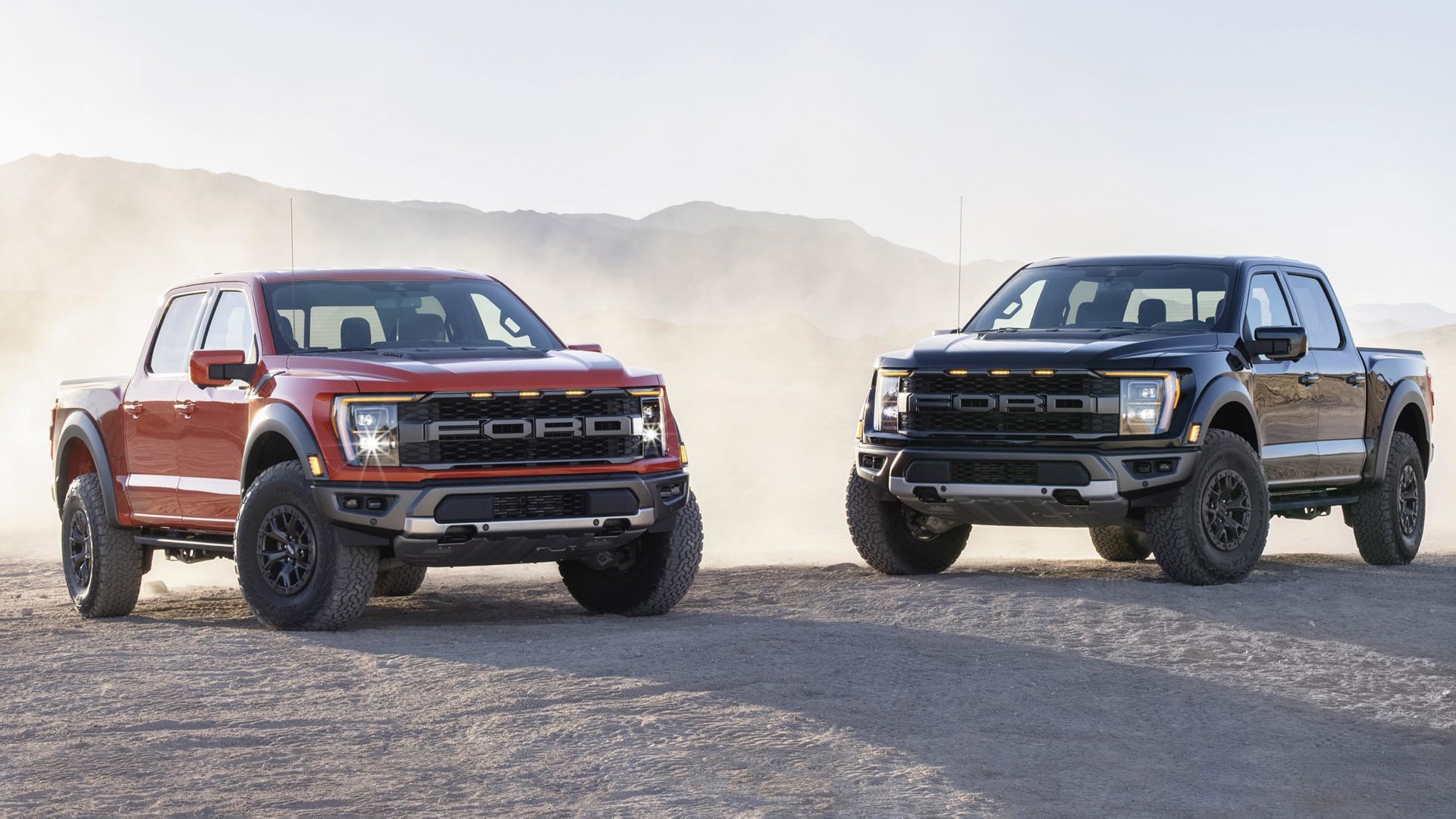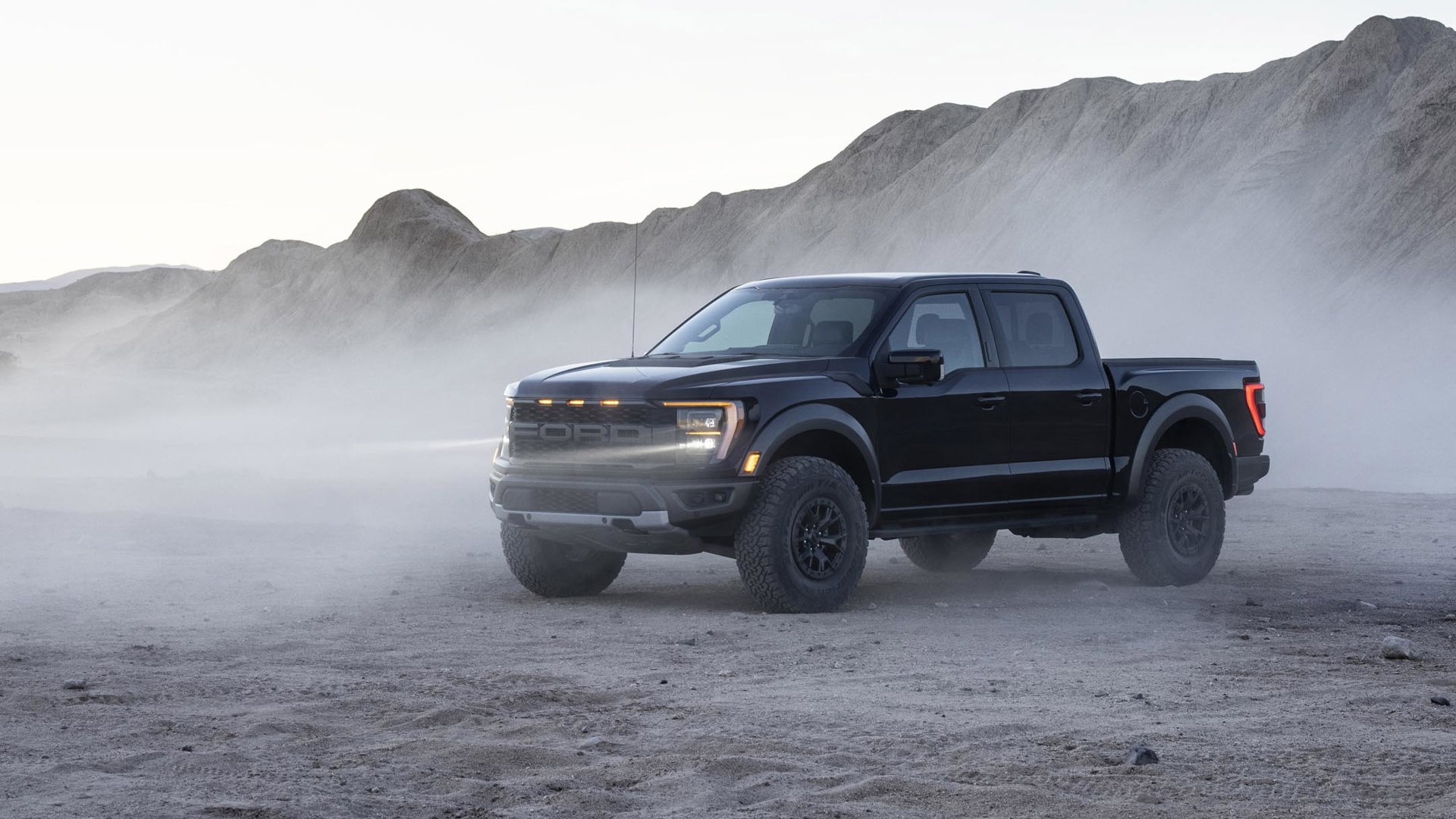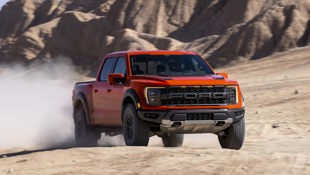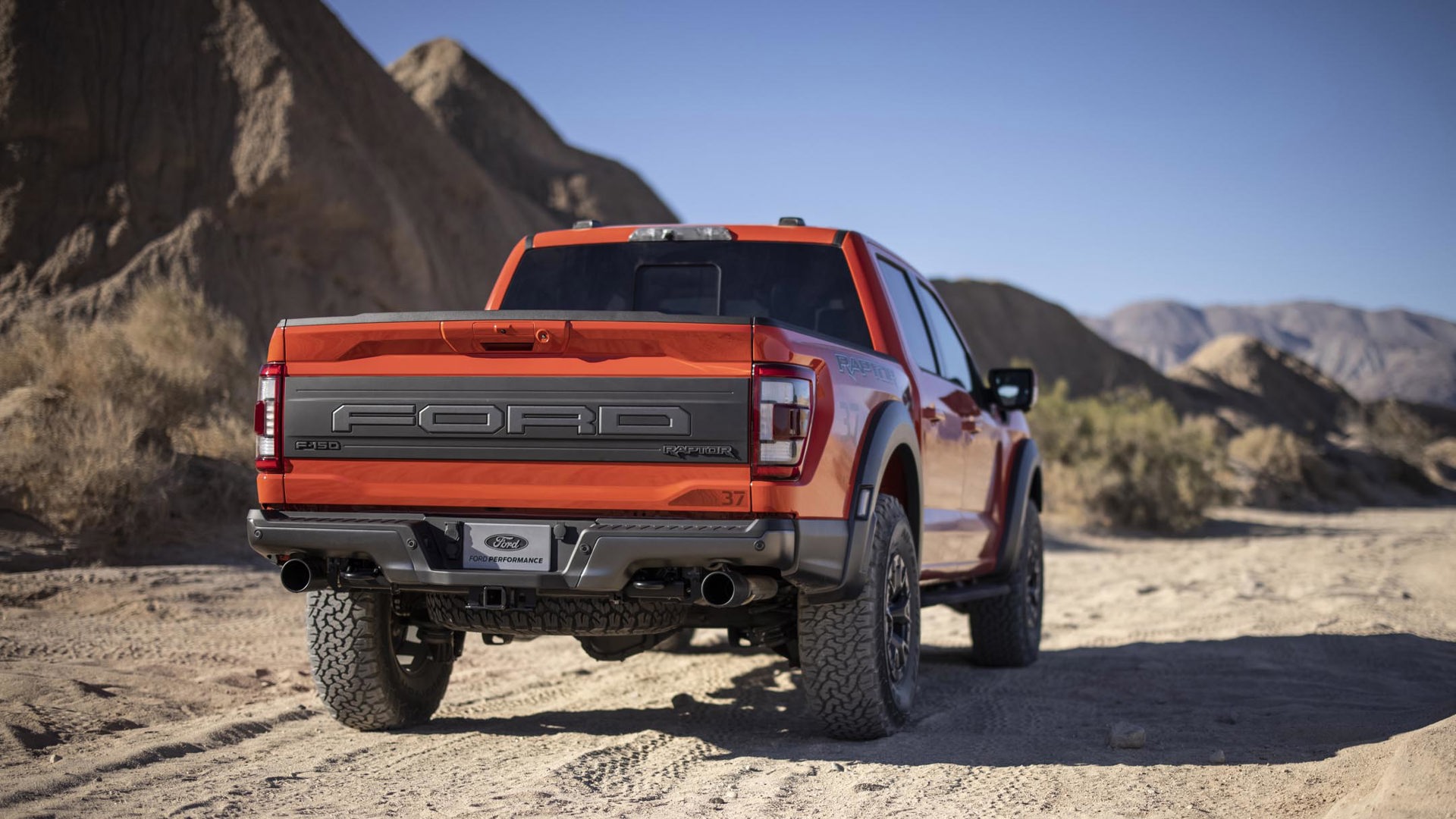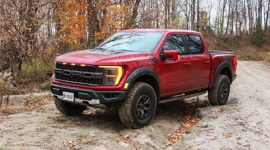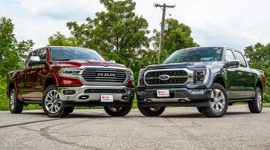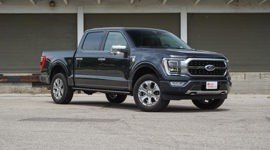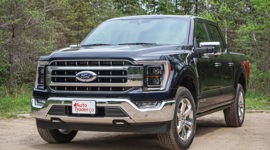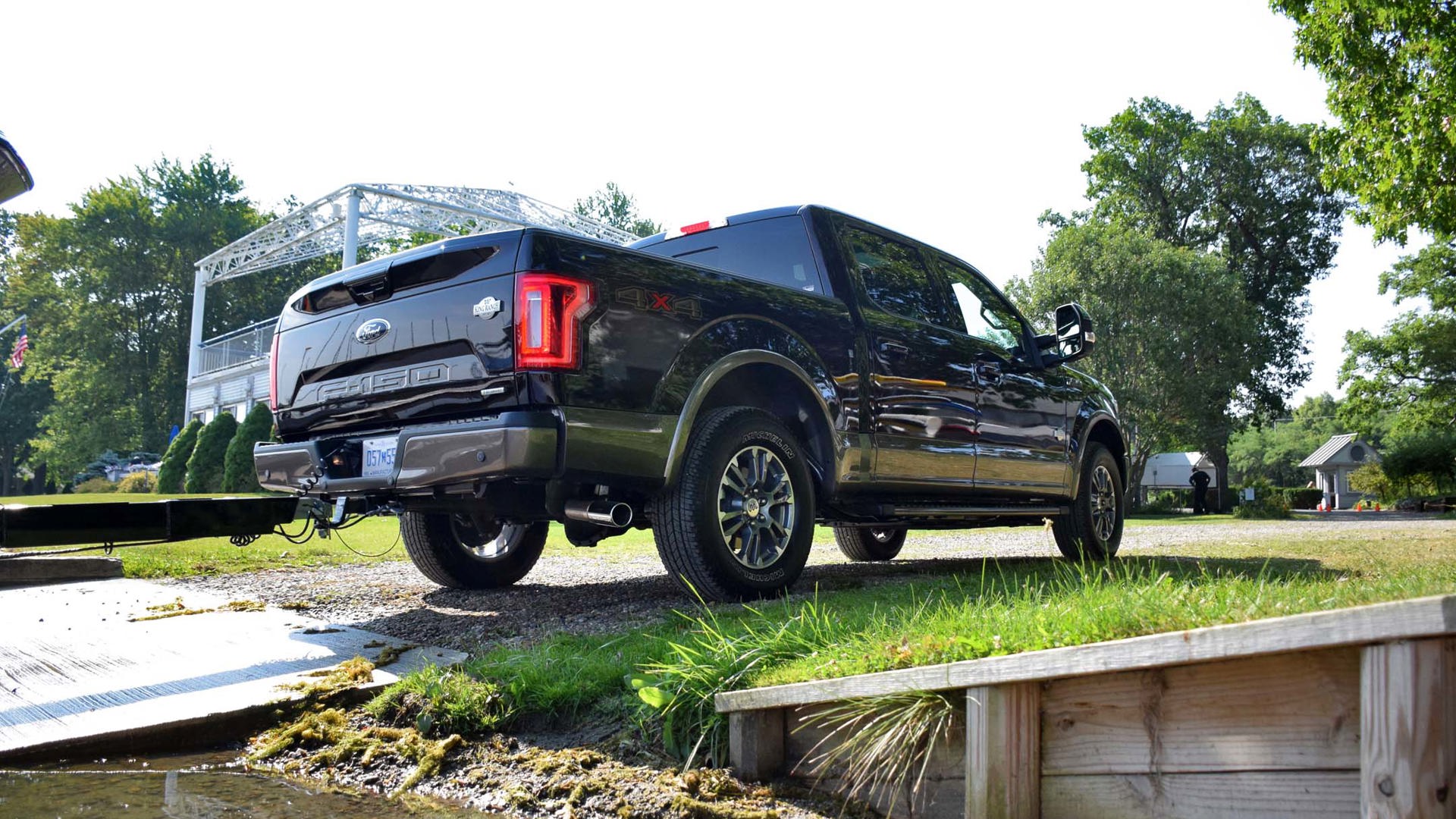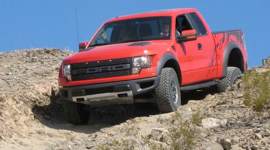A dozen years ago, ownership of desert trophy trucks capable of leaping high sand dunes was limited to factory racing teams and hardcore endurance competitors with exceptional fabrication connections.
When Ford’s F-150 Raptor debuted in 2009 with the credentials of a bona fide Baja 1000 entry, it established a new segment of performance truck. But was there really a market for such a niche vehicle? Apparently so – according to Ford, over the last four years the Raptor has outsold other performance heavies such as the Chevrolet Corvette, and Porsche’s entire lineup of sports cars. It also sparked the introduction of other arrivals to the segment, including the Chevrolet Colorado ZR2, and Ram’s new Hellcat-powered TRX.
And now the Raptor returns in its third generation with more rock crawling capability and a host of new technology.
3.5L V6 at debut, V8 on the way
Of course, what most fans want to know is what lies under the hood. The arrival of Ram’s V8-powered, 702-hp TRX ups the ante considerably, since the 6.2L V8-powered versions of the first-gen Raptor are highly coveted among hardcore fans. While Ford confirmed a Raptor R will arrive next year, there was no further information about its powertrain. It’s quite possible that it will get a version of the Mustang Shelby GT500’s 760-hp supercharged V8, thus putting the Ram in its place.
The standard Raptor debuts with a twin-turbo 3.5L V6. Horsepower and torque numbers are not yet available, but we assume it’s an upgraded version of the current model’s engine that makes 450 hp and 510 lb-ft of torque mated to a 10-speed automatic transmission. Fuel efficiency numbers are not yet available either.
Design inspired by F-22 fighter jet
Some 152 mm (six in) wider than the standard F-150, the Raptor emphasizes that width with an enormous grille stretching from headlight to headlight. A stretched-out Ford logo and wide brow line further accentuate its breadth. Dark bezels around the headlights, wide fenders and mouldings, pronounced skid plates, and marker lights accentuate its menacing desert truck character. Ford claims the gaping new air ducts along its fenders are inspired by F-22 fighter jets, but that seems a stretch. At least they’re functional, as is the bulging extractor on the power dome hood.
The side-to-side steel skid plate features three ribs that tie into the trio of marker lamps, and also add structural rigidity. New character lines sculpted into the side sheet metal suggest speed and motion.
There are three Raptor specific wheel choices: a standard machined metal with C-clamp motif, optional steelies, and a gloss black option that comes only with the 37-inch tire package. The two optional wheels are bead-lock-capable and have removable beauty rings.
There are two available graphics packages; one furthers the F-22 fighter jet connection with an X-pattern that greys out into diamond shapes that apparently suggest the jets afterburners. Alphanumeric decals inspired by aircraft identification numbers use FP for Ford Performance, and GN03 for third generation. This package also features a hidden QR code within the graphic which is apparently a Ford vehicle first.
The second graphics theme is available only with the 37-inch tire package and features a full-vehicle desert-racing-inspired topographical map with trail routes.
Traditionally, Ford has used Race Red as a colour scheme to define its ST, GT, and Raptor performance variants, but has added a new Code Orange hero colour for the Raptor. It carries over into the interior, on the steering wheel’s centring ring, and the American flag etched onto the instrument panel.
There are three interior trim levels: Base, High Series, and Accent Series. Base models come with fabric seats featuring a carbon-fibre-style weave, and leather bolsters. High Series upholstery adds suede seat inserts, while top-of-the-line Accent Series features light blue leather with Code Orange stitching and optional carbon fibre on the trim. Recaro seats are optional.
A 12.4-inch digital gauge cluster with Raptor-specific graphics is standard, and there’s a unique Raptor information screen that relays drive mode and other information. The new Baja drive mode gets its own unique graphic theme in the gauge cluster. Standard is the F-150 12-inch touchscreen. Ford’s trick new console that flips over into a handy work area is optional. In back, there’s lockable underseat storage for hiding valuables, or just stowing them away so they’re not tossed around the cabin while on the trails.
New chassis allows optional 37-inch factory tires
The new Raptor rides on a modified and reinforced version of the high-strength platform that underpins the new F-150. The front and rear suspension has undergone significant redesign for better on-road ride quality. Up front are taller, stronger shock towers, unique control arm pivot locations, a lowered front axle for increased travel, and stronger bracketry for shocks and spring attachments. The suspension components – ball joints, knuckles, wheel bearings, control arms – are all unique to Raptor and allow 356 mm (14 in) of front travel. Available is a Torsen front limited-slip differential.
Around back is a new five-link rear suspension with panhard bar to laterally stabilize the rear axle and improving traction to allow more torque to be put to the ground. Extra-long trailing arms and tall, triple rate coils add more stability. An electronic locking rear differential is standard. The rear suspension boasts a class-leading 381 mm (15 in) of travel.
Maximum towing capacity increases by 91 kg (200 lb) to 3,719 kg (8,200 lb) and payload is now 635v kg (1,400 lb).
As before, there are Fox performance shocks at each corner, but now there’s an upgraded package that comes bundled with 37-inch tires. The new shocks have increased diameter, a nine-zone damping tune with internal bypass, and double the damping power. This is the first F-150 to offer 37-inch tires from the factory, which improve approach, departure, and breakover angle while creating better running clearance. The standard tire is 35 inches, so the huge wheels required some creative engineering and lifting of the truck to work with clearance zones and avoid interference with suspension components. The adaptive damping system is integrated into the truck’s drive modes, and can adapt damping rates up to 500 times per second.
All the standard tech from the F-150, and more
Onboard is a terrain management system with seven settings, including sport, rock crawl, and Baja. The driver-selectable modes adjust steering feel, active valve exhaust, position-sensitive damping, throttle mapping, and transmission shift points to comply with driving conditions. Trail control is standard and manages throttle and braking at speeds as fast as about 32 km/h so the driver can focus only on steering while the truck maintains a consistent speed over difficult terrain. Available one-pedal drive combines brake and accelerator; press to accelerate and lift to brake.
A boon for deep off-road enthusiasts is the new two-kilowatt onboard generator that debuted with the F-150. For adventures off-grid, it can supply power to camp lights or electric heaters. Its power draw can be monitored using a smartphone or the truck’s infotainment interface.
That infotainment system now features improved voice recognition, and live map information such as traffic, construction, and road conditions. Over-the-air updates for such features as trail maps and real-time tire pressures can be downloaded when the driver chooses.
Apple CarPlay and Android Auto now connect wirelessly, and there’s a wireless charging pad, and four USB ports. The FordPass smartphone app now controls zone lighting, onboard pro power monitoring, and trailer light checking, as well as remote start and locking.
Standard is Ford’s CoPilot 360 suite of driver-assist technologies, which now includes an intersection assist that applies brakes when oncoming traffic is detected during left turns; a self-parking system with parallel and perpendicular parking; and a steering assist for the adaptive cruise control that’s to arrive later.
Ford claims that the V6 engine could be mistaken for a burbling V8 thanks to the new trombone exhaust. That might be pushing it a little, however, it does offer four exhaust modes: quiet, normal, sport, and Baja, which change automatically depending on how the truck is being driven and what drive mode is selected.
First-generation V8-powered Raptors still command high prices at auction, so it’s safe to say that hardcore fans will probably want to wait and see what the Raptor R will bring. The V8-powered Ram TRX is clearly a menacing contender for the trophy truck throne. Consider the gauntlet thrown.
